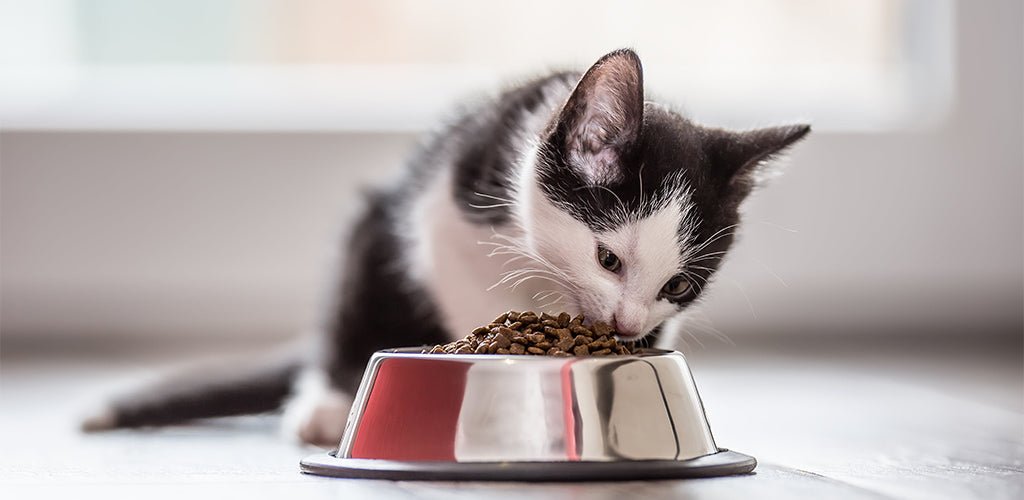In 24 cities

Kitten Feeding Basics: What, When & How
|
|
Time to read 3 min
Get product availability and delivery timelines based on your location.
Are you sure you want to delete this address?
Help us ensure a smooth delivery
Help us ensure a smooth delivery
SIZE GUIDE
|
|
Time to read 3 min
The dietary requirements of kittens are very different from the requirements of an adult cat. A growing kitten requires higher protein levels, more calories and higher quantities of specific nutrients (such as calcium) to ensure that they grow healthy and strong.
With tons of energy and lots of time spent playing, their diet needs to accommodate for both the calories burnt through exercise and the energy required for growth and development.
What to feed your kitten?
The biggest decision with feeding your kitten will be choosing between wet food and dry food. To help you make your decision, here are some pros and cons of each type of food -
When determining the best option for your kitten, choose a few possible options, and speak to your veterinarian to identify the most suitable one.
How much do you feed?
Kittens grow rapidly at this age and require a lot of food when compared to adults. We need to provide all the essential nutrients for growth and develop long-term healthy eating habits.
Feeding guidelines vary based on the kitten. However, the feeding directions on the kitten food packet are a good starting point after which adjustments can be made based on your kitten’s requirements.
While we want kittens to be hungry for their meal, we also do not want them to devour the entire meal in a few seconds. Young kittens generally eat about ¼ to ½ cups of food at a time. Speak to your veterinarian for any concerns.
Younger kittens (6-16 weeks), if meal-fed, need to be fed several meals per day, As they are growing and burning calories, we want to keep their bodies supplied with energy. Feed meals every 6-8 hours. Typically, by the time kittens get to 4-5 months, they can be transitioned to two meals per day, still feeding the total number of daily calories, but in less frequent, larger meals.
Free-feeding vs Meal-feeding
Free-feeding is usually done with dry food, leaving a bowl out all the time so the food is readily available. This is convenient for pet parents with busy schedules. The benefit to this type of feeding is that your kitten can eat when they want and ideally self-regulate how much they need. One point of concern to this is that some kittens will overeat and gain excessive weight. Additionally, in a multi-cat household, the older or more dominant cats have access to the kitten food.
This is not always healthy for the older cat’s needs and more dominant cats may control the kitten’s access to the food bowl. In these cases, the kitten may not be getting enough to eat. It can be hard to track an individual cat’s eating habits when they share a free-feeding bowl. One way to deal with this is by using a microchip-activated feeder that only opens when it scans your kitten’s microchip. Just make sure another cat is not guarding this feeder and keeping the kitten from eating.
Meal-feeding is more time-intensive for pet parents and tends to require a routine. You need to make sure you are able to feed your kitten often enough with this type of feeding. There are some cat food bowls that work on timers to automatically release a measured amount of dry food at specified times.
Kittens can also learn to use their instinctual hunting behavior to work for part of their daily food. This helps keep your kitten healthy, mentally and physically. There are many interactive bowls, balls that disperse dry food slowly. These are some other options available to keep your kitten occupied so his/her meal is not gone in a few seconds.
Share this blog
Read More Articles
2 item in cart
₹10,360

